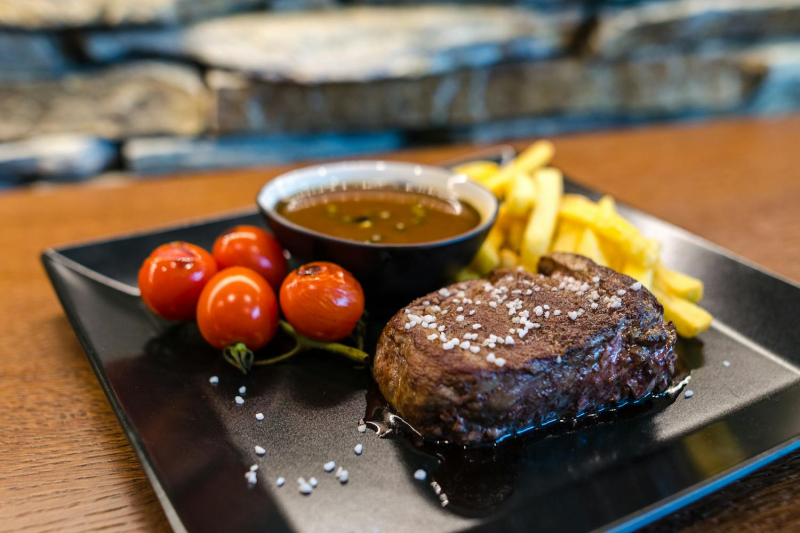
© Lukas/Pexels
Food security is one of the challenges of our century. How can we ensure that everyone is fed in the future as populations explode, global warming gains ground and the resilience of food systems is threatened? ? More respectful agriculture, sustainable aquaculture, edible insects, algae, hybrid foods, etc. Starting in the 2010s, the idea of 3D printing meat began to emerge for various reasons: reducing the environmental impact of intensive farming, meeting the growing demand for protein, and respecting animal ethics.
Today, this approach is still in the experimental stage, but we have never been closer to seeing these synthetic meats arrive on our plates. However, there is a gap to be filled between technical prowess and taste satisfaction, and the road to getting there still seems long.
From the printer to the plate
Israeli company Steakholder Foods is at the forefront of this so-called culinary revolution. Their technology allows for the printing of various types of plant-based “meats,” from white fish to marbled steak to filet. The process uses a blend of plant-based protein ingredients, water, and oils, all assembled using specialized 3D printers.
These machines, capable of producing up to 500 kilos of “meat,” per hour for terrestrial species and 100 kilos for marine species, aim for large-scale production. The stated goal is to faithfully recreate the complex structures of different cuts of meat, including the flaky texture of fish or the marbling of a steak (the presence of small veins of white fat in the meat).
The test of fire: taste
Producing meat is not enough, the flavors must also be up to par, and the true value of this innovation is measured on the plate. Wired food tests of Steakholder Foods products reveal more than mixed results.
The white fish fillet, while visually promising, disappoints with its texture, which is more reminiscent of a mousse than the delicate fibers of a real fish. The steak, on the other hand, manages to reproduce some visual aspects of meat, such as the fibrous structure and even the Maillard reaction during cooking. A series of chemical reactions between amino acids and reducing sugars, which occurs during cooking and gives food its brown color and good grilled flavor. However, the result is severely lacking in flavor and a texture that is far too dry.
200% Deposit Bonus up to €3,000 180% First Deposit Bonus up to $20,000The marbled steak, the company's flagship product, even mimics the fat lines naturally present in some meats. Except that the latter are 3D printed. However, despite a nice browning during cooking, the end result lacks juiciness and depth of taste, proving to be more of a support for the sauce than a delight in itself.
The challenge of authenticity: beyond imitation
It's hard not to compare Steakholder Foods' proposal to other plant-based alternatives already on the market. Products from companies like Beyond Meat or Juicy Marbles manage to seduce the taste buds not by perfectly imitating meat, but by offering a satisfying taste experience in itself. And even then, this is debatable, even within the vegan community, these products are far from unanimous.
This observation raises an absolutely fundamental issue when it comes to sustainable food. Does the future of meat alternatives lie in perfect imitation or in creating new tasty products, regardless of their resemblance to animal meat? ? Critics of 3D printed meats highlight the risk of focusing excessively on the technological aspect to the detriment of taste and culinary pleasure. Providing protein is good; Providing tasty proteins is even better, and we're clearly not there yet.
Twenty years ago, printing meat was the stuff of science fiction. Today, we can do it, but the results don't seem to be up to par yet. Consumers are looking for satisfying taste and sensory experiences, whether or not they mimic traditional meat. Food is not just about innovation, and in this area, taste will remain king.
- 3D printing of meat has emerged to reduce environmental impact and meet the growing demand for protein.
- While the technology is advancing, testing of Steakholder Foods' products is still inconclusive.
- The challenge remains to create meat alternatives that are not only sustainable, but also truly delicious.
📍 To never miss any Presse-citron news, follow us on Google News and WhatsApp.
[ ]

